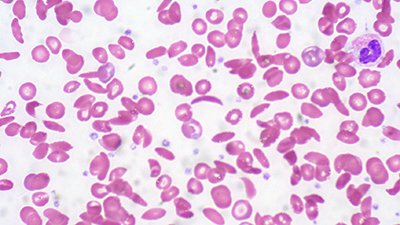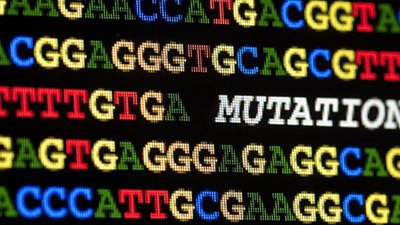
De-Regulation of an Existing Trait
Genome analysis confirms “a key evolutionary innovation” is only de-regulation of an existing trait.
News Source
- Discover: “The Birth of the New, the Rewiring of the Old”
A better title for today’s article about Richard Lenski’s bacterial genealogy and its “evolutionary bag of tricks” might be “The Apparent Birth of the New is Only the Rewiring of the Old” or “Bacteria Demonstrates How to Make the Most of What It Already Has.” Since 2008 evolutionists have triumphantly touted Lenski’s 20-year-old E. coli family’s new ability to subsist on citrate as the perfect proof that new traits can evolve, a “poke in the eye” to creationists.1
Now that Lenski and colleague Zachary Blount have examined the step-wise genetic history of this “key innovation” with their “increasingly powerful evolutionary microscope,” evolutionary flag-waving in the form of headlines like “Evolution is as Complicated as 1-2-3” and “E. Coli caught in the act of evolving” are again popping up. But a closer look reveals only an affirmation of what creation scientists have been saying for years.
Lenski’s lab has been the home to over 55,000 generations of a strain of E. coli. He’s been generous with oxygen but stingy with their food supply, allowing them only a small amount of glucose, to see what they would do. A few years back, one flask of the microbes had a population explosion after “learning” to munch on citrate, a chemical abundant in their bathwater. Microbiologists don’t usually consider E. coli to be citrate-eaters because in oxygen-rich environments, they aren’t. But it takes oxygen to efficiently metabolize glucose, and E. coli is equipped with the ability to metabolize citrate when the oxygen supply is low.
The on-switch for citrate utilization is part of the E. coli genome. Under low-oxygen conditions, a chemical change affecting a genetic switch turns on production of a citrate-transporting protein. That citrate transporter then brings citrate into the cell, and E. coli is able to survive by metabolizing it. Thus, the ability to utilize citrate is already part of the E. coli toolkit.
By examining frozen samples of the E. coli, Blount and Lenski found that their E. coli had experienced a mutation allowing this citrate transporter to be produced even when oxygen was plentiful. The mutation was a duplication of the citrate transport gene, and the duplicate copy was located near a switch that kept it turned on. Thus, the E. coli appeared to acquire a new ability, when they had really just experienced degenerate mutations and a duplication of an already existing gene that de-regulated an already existing ability.
By thawing out some bacteria and observing them, they found that additional mutations were necessary prerequisites to the “key” de-regulating mutation.
Their latest research, published in Nature, delves more deeply into the genetic history. By thawing out some bacteria and observing them, they found that additional mutations were necessary prerequisites to the “key” de-regulating mutation. They also discovered that additional mutations occurring randomly after citrate utilization begins allow some of the bacteria to utilize the citrate more efficiently and to therefore thrive.
Of course, the evolutionary columnist describes this procedure in evo-speak: “What would happen if they wound back the evolutionary tape and let the bacteria re-evolve. Would the citrate feeding evolve again?” The failure of genetic manipulation attempting to insert the mutated DNA into some bacteria is described by saying, “The early-generation bacteria were not ready to receive this evolutionary gift.” The language is colorful but paints a false picture.
Commenting on the extravagant claims, Answers in Genesis molecular geneticist Dr. Georgia Purdom said, “Lenski discovered that due to the duplication and rearrangement of pre-exsiting information, E. coli cultured in the lab for multiple generations could use citrate in the presence of abundant oxygen. This is a far cry from the key innovation he claims in the title of his Nature article, “Genomic analysis of a key innovation in an experimental Escherichia coli population.”
These bacteria did not evolve a key innovation. They did not acquire new genetic information, as duplication of an existing gene is nothing new. They did not even do anything new or innovative with old information. All they did was experience a mutation—a loss of regulatory information—that allowed them to access an existing ability more easily. The discovery that addition mutations are required has allowed a peek into the genetic complexity that provides the raw material for populations to adapt to new conditions. Mutations—even duplications that land near on-switches—do not provide new genetic information or the raw material that “moves bacteria in an upward evolutionary direction.”2
Further Reading
For More Information: Get Answers
Remember, if you see a news story that might merit some attention, let us know about it! (Note: if the story originates from the Associated Press, FOX News, MSNBC, the New York Times, or another major national media outlet, we will most likely have already heard about it.) And thanks to all of our readers who have submitted great news tips to us. If you didn’t catch all the latest News to Know, why not take a look to see what you’ve missed?
(Please note that links will take you directly to the source. Answers in Genesis is not responsible for content on the websites to which we refer. For more information, please see our Privacy Policy.)
Footnotes
- To review the whole story, see Georgia Purdom, “A Poke in the Eye?,” Answers in Genesis, June 30, 2008, https://answersingenesis.org/genetics/mutations/a-poke-in-the-eye/.
- Ibid.

Answers in Genesis is an apologetics ministry, dedicated to helping Christians defend their faith and proclaim the good news of Jesus Christ.
- Customer Service 800.778.3390
- Available Monday–Friday | 9 AM–5 PM ET
- © 2026 Answers in Genesis



